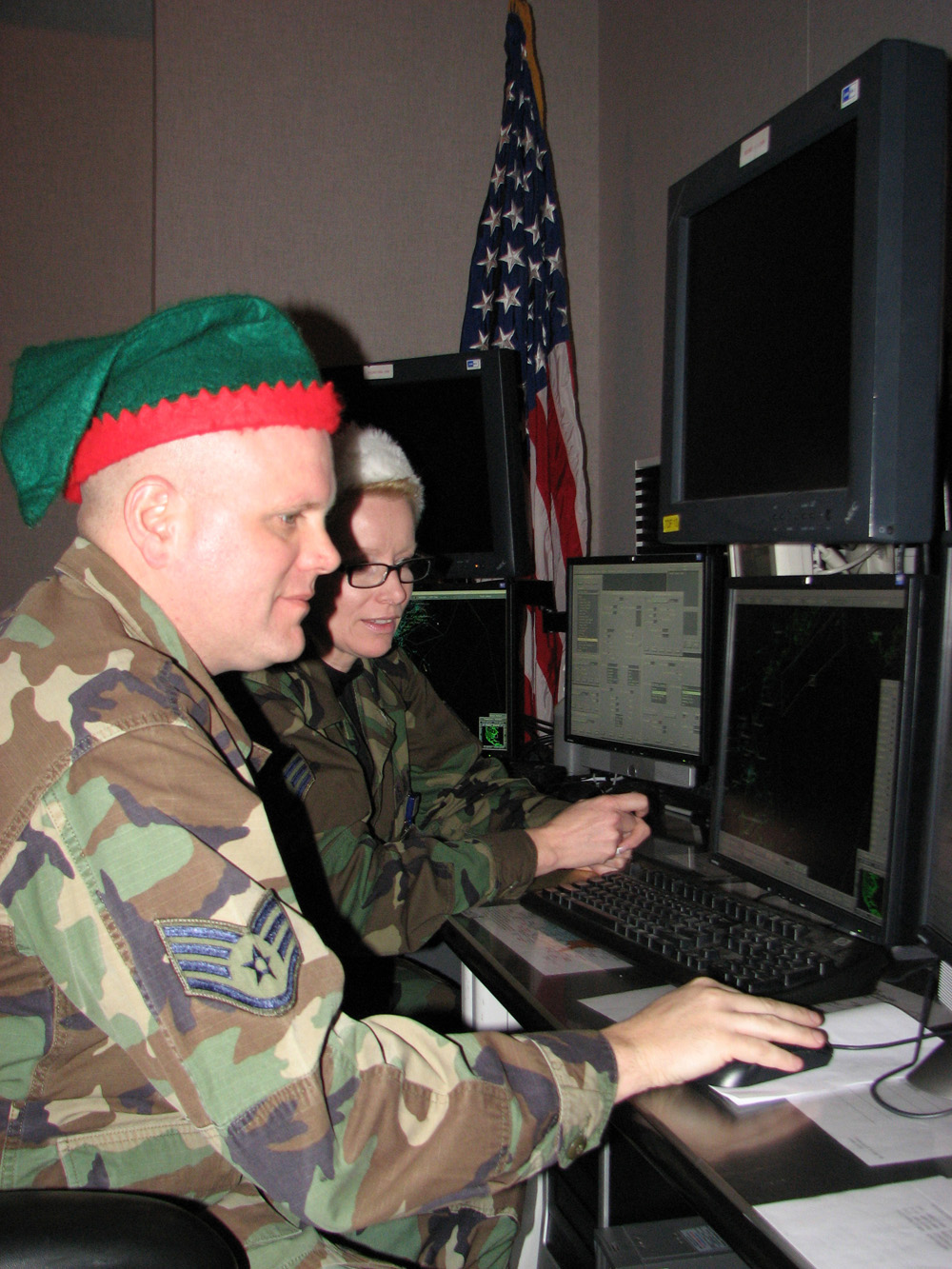
Do your kids keep asking when exactly Santa Claus will be swinging by your neighborhood this Christmas? Well, there's a way to find out: the NORAD Santa tracker.
NORAD — short for the North American Aerospace Defense Command, a joint effort of the United States and Canada — keeps an eye on the jolly old elf's gift-giving trek every year, and you can follow along at the "NORAD Tracks Santa" website.
NORAD uses a variety of tools to monitor St. Nick's journey and make sure he and his reindeer are staying safe, including radar, satellites and high-tech "SantaCams." And NORAD fighter pilots escort Santa as he delivers presents throughout the U.S. and Canada, making sure the elf and his reindeer stay safe.
This playful tradition began in 1955, when a Sears Roebuck & Co. branch in Colorado Springs ran an advertisement that included a phone number at which kids could reach Santa. But the ad misprinted the number, instead putting children through to the operations hotline of the commander-in-chief of NORAD's predecessor organization, CONAD (Continental Air Defense Command).
"The Director of Operations at the time, Colonel Harry Shoup, had his staff check the radar for indications of Santa making his way south from the North Pole," officials wrote on the "NORAD Tracks Santa" website. "Children who called were given updates on his location, and a tradition was born."
NORAD replaced CONAD in 1958, taking on the job of tracking missiles, airplanes and anything else that flies in or near North American airspace — including Santa and his reindeer.
Follow Mike Wall on Twitter @michaeldwall and Google+. Follow us @Spacedotcom, Facebook or Google+. Originally published on Space.com.
Get the Space.com Newsletter
Breaking space news, the latest updates on rocket launches, skywatching events and more!
Join our Space Forums to keep talking space on the latest missions, night sky and more! And if you have a news tip, correction or comment, let us know at: community@space.com.

Michael Wall is a Senior Space Writer with Space.com and joined the team in 2010. He primarily covers exoplanets, spaceflight and military space, but has been known to dabble in the space art beat. His book about the search for alien life, "Out There," was published on Nov. 13, 2018. Before becoming a science writer, Michael worked as a herpetologist and wildlife biologist. He has a Ph.D. in evolutionary biology from the University of Sydney, Australia, a bachelor's degree from the University of Arizona, and a graduate certificate in science writing from the University of California, Santa Cruz. To find out what his latest project is, you can follow Michael on Twitter.










